Yeasir Rayhan
Lightning Prediction under Uncertainty: DeepLight with Hazy Loss
Aug 10, 2025Abstract:Lightning, a common feature of severe meteorological conditions, poses significant risks, from direct human injuries to substantial economic losses. These risks are further exacerbated by climate change. Early and accurate prediction of lightning would enable preventive measures to safeguard people, protect property, and minimize economic losses. In this paper, we present DeepLight, a novel deep learning architecture for predicting lightning occurrences. Existing prediction models face several critical limitations: they often struggle to capture the dynamic spatial context and inherent uncertainty of lightning events, underutilize key observational data, such as radar reflectivity and cloud properties, and rely heavily on Numerical Weather Prediction (NWP) systems, which are both computationally expensive and highly sensitive to parameter settings. To overcome these challenges, DeepLight leverages multi-source meteorological data, including radar reflectivity, cloud properties, and historical lightning occurrences through a dual-encoder architecture. By employing multi-branch convolution techniques, it dynamically captures spatial correlations across varying extents. Furthermore, its novel Hazy Loss function explicitly addresses the spatio-temporal uncertainty of lightning by penalizing deviations based on proximity to true events, enabling the model to better learn patterns amidst randomness. Extensive experiments show that DeepLight improves the Equitable Threat Score (ETS) by 18%-30% over state-of-the-art methods, establishing it as a robust solution for lightning prediction.
P-MOSS: Learned Scheduling For Indexes Over NUMA Servers Using Low-Level Hardware Statistics
Nov 05, 2024



Abstract:Ever since the Dennard scaling broke down in the early 2000s and the frequency of the CPU stalled, vendors have started to increase the core count in each CPU chip at the expense of introducing heterogeneity, thus ushering the era of NUMA processors. Since then, the heterogeneity in the design space of hardware has only increased to the point that DBMS performance may vary significantly up to an order of magnitude in modern servers. An important factor that affects performance includes the location of the logical cores where the DBMS queries are scheduled, and the locations of the data that the queries access. This paper introduces P-MOSS, a learned spatial scheduling framework that schedules query execution to certain logical cores, and places data accordingly to certain integrated memory controllers (IMC), to integrate hardware consciousness into the system. In the spirit of hardware-software synergy, P-MOSS solely guides its scheduling decision based on low-level hardware statistics collected by performance monitoring counters with the aid of a Decision Transformer. Experimental evaluation is performed in the context of the B-tree and R-tree indexes. Performance results demonstrate that P-MOSS has up to 6x improvement over traditional schedules in terms of query throughput.
Deep Learning Based Crime Prediction Models: Experiments and Analysis
Jul 27, 2024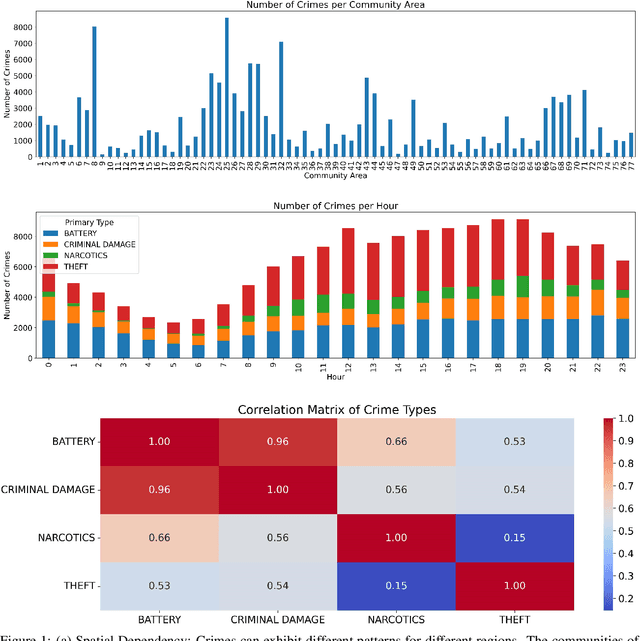

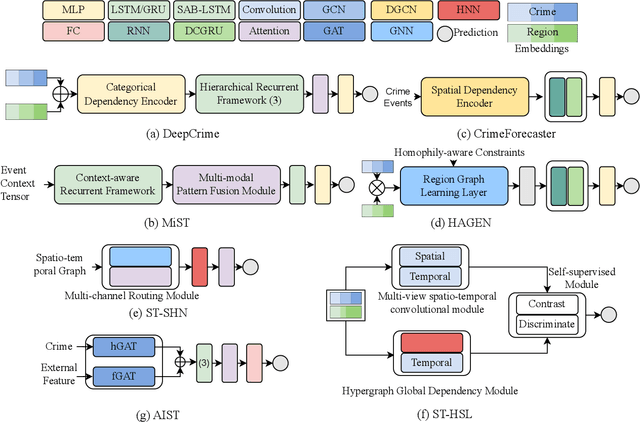
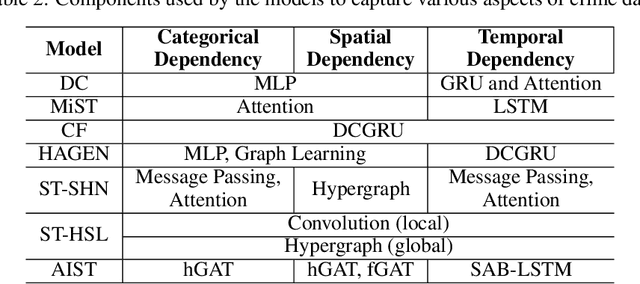
Abstract:Crime prediction is a widely studied research problem due to its importance in ensuring safety of city dwellers. Starting from statistical and classical machine learning based crime prediction methods, in recent years researchers have focused on exploiting deep learning based models for crime prediction. Deep learning based crime prediction models use complex architectures to capture the latent features in the crime data, and outperform the statistical and classical machine learning based crime prediction methods. However, there is a significant research gap in existing research on the applicability of different models in different real-life scenarios as no longitudinal study exists comparing all these approaches in a unified setting. In this paper, we conduct a comprehensive experimental evaluation of all major state-of-the-art deep learning based crime prediction models. Our evaluation provides several key insights on the pros and cons of these models, which enables us to select the most suitable models for different application scenarios. Based on the findings, we further recommend certain design practices that should be taken into account while building future deep learning based crime prediction models.
AIST: An Interpretable Attention-based Deep Learning Model for Crime Prediction
Dec 16, 2020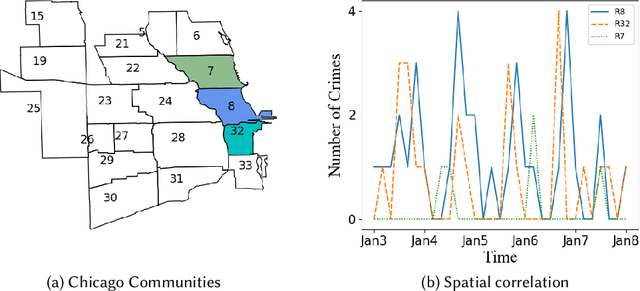
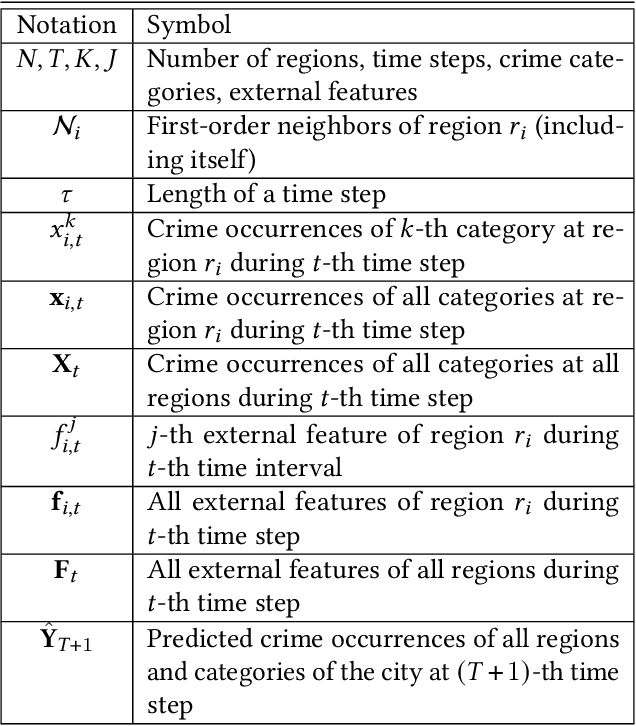
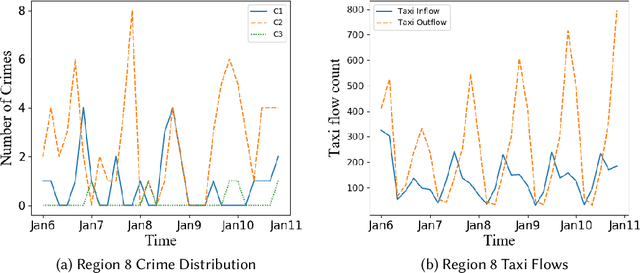

Abstract:Accuracy and interpretability are two essential properties for a crime prediction model. Because of the adverse effects that the crimes can have on human life, economy and safety, we need a model that can predict future occurrence of crime as accurately as possible so that early steps can be taken to avoid the crime. On the other hand, an interpretable model reveals the reason behind a model's prediction, ensures its transparency and allows us to plan the crime prevention steps accordingly. The key challenge in developing the model is to capture the non-linear spatial dependency and temporal patterns of a specific crime category while keeping the underlying structure of the model interpretable. In this paper, we develop AIST, an Attention-based Interpretable Spatio Temporal Network for crime prediction. AIST models the dynamic spatio-temporal correlations for a crime category based on past crime occurrences, external features (e.g., traffic flow and point of interest (POI) information) and recurring trends of crime. Extensive experiments show the superiority of our model in terms of both accuracy and interpretability using real datasets.
 Add to Chrome
Add to Chrome Add to Firefox
Add to Firefox Add to Edge
Add to Edge